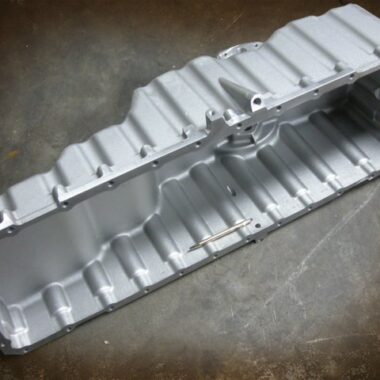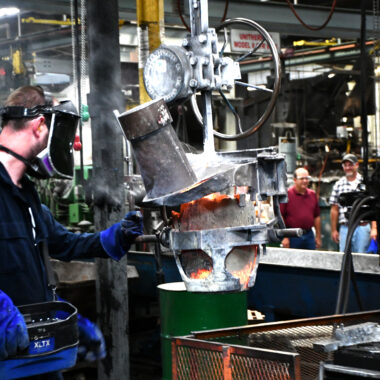Aluminum Casting Proficiency: Approaches to Raise Your Manufacturing Refine
Aluminum Casting Proficiency: Approaches to Raise Your Manufacturing Refine
Blog Article
Study the Globe of Aluminum Casting: Understanding the Different Methods
Light weight aluminum spreading is an essential process in the production sector, with different techniques employed to develop accurate and detailed elements. From the standard sand casting method to the advanced die spreading process, each method provides one-of-a-kind advantages depending on the requirements of the task.
Sand Spreading Approach
Sand casting, a widely-used technique in light weight aluminum spreading processes, includes producing mold and mildews made of compressed sand for pouring molten metal. When the mold is ready, it is safely positioned in a flask and molten aluminum is put right into the cavity.
After the metal has actually cooled and strengthened, the sand mold is broken away to disclose the aluminum spreading. Sand casting permits the production of complicated forms and huge components that may be difficult or pricey to produce using various other techniques. It is likewise a lasting strategy as the sand can be reused and made use of numerous times, reducing waste in the casting procedure.
Irreversible Mold And Mildew Method

One significant advantage of the Irreversible Mold Strategy is the improved dimensional precision it supplies. The metal mold and mildew permits tighter resistances and better information in the final aluminum spreadings compared to sand spreading techniques. This accuracy makes it a favored option for applications where tight dimensional control is vital, such as in the aerospace and automotive markets.

Pass Away Casting Refine

Financial Investment Casting Strategy
Using an accuracy spreading method, Investment Casting Method involves producing complex light weight aluminum parts by putting liquified steel into a ceramic mold and mildew. This process, likewise understood as lost-wax spreading, starts with the production of a wax pattern of the desired component (aluminum casting).
The following step entails putting the liquified aluminum right into the ceramic mold and mildew. The aluminum fills the tooth cavity left by the wax pattern, taking its shape exactly. This method is favored for its ability to generate intricate shapes with high accuracy and a smooth surface area coating. Financial investment spreading is typically made use of for manufacturing elements in markets where tight tolerances and complex styles are needed, such as aerospace, auto, and clinical devices. The versatility and recommended you read accuracy of the Financial investment Casting Method make it a valuable strategy worldwide of aluminum spreading.
Lost Foam Casting Approach
Having actually discovered the detailed precision of Financial investment Casting Method, the focus now shifts to the innovative technique of Lost Foam Spreading in light weight aluminum part production. Lost Foam Spreading, additionally called evaporative pattern spreading, check my reference is a modern-day technique where a foam pattern of the desired part is created and afterwards coated with a refractory product. The layered foam pattern is then hidden in sand, and molten light weight aluminum is put right into the mold and mildew. As the steel fills the mold, the foam evaporates because of the warm, leaving a clean tooth cavity in the form of the preferred part.
Furthermore, Lost Foam Spreading is an affordable process as it minimizes the need for cores and permits for the production of lightweight elements. Regardless of its benefits, Lost Foam Casting calls for mindful control of the spreading procedure to avoid flaws and make certain high quality components.
Final Thought
To conclude, light weight aluminum spreading provides a range of methods such as sand spreading, permanent mold method, pass away casting, investment spreading, and lost foam spreading. Each technique has its very own benefits and applications, making light weight aluminum casting a functional and commonly used procedure in various sectors. Recognizing the distinctions in between these approaches is vital in selecting one of the most suitable casting strategy for specific production requirements.
Sand casting, a widely-used technique in light weight aluminum casting processes, entails creating mold and mildews made of compacted sand for putting liquified steel. aluminum casting.The Irreversible Mold And Mildew Technique, like sand spreading, is an additional common method utilized in aluminum casting processes, supplying Learn More Here distinctive advantages in terms of mold and mildew reusability and dimensional accuracy. The metal mold enables for tighter resistances and finer information in the last aluminum spreadings compared to sand casting methods. The two major kinds of die casting are cool chamber pass away casting and warm chamber pass away casting, each ideal for different kinds of aluminum alloys.In final thought, aluminum casting provides a range of approaches such as sand spreading, permanent mold and mildew technique, die casting, financial investment spreading, and shed foam casting
Report this page